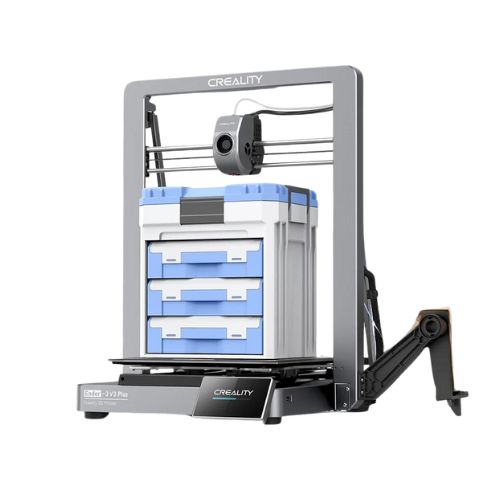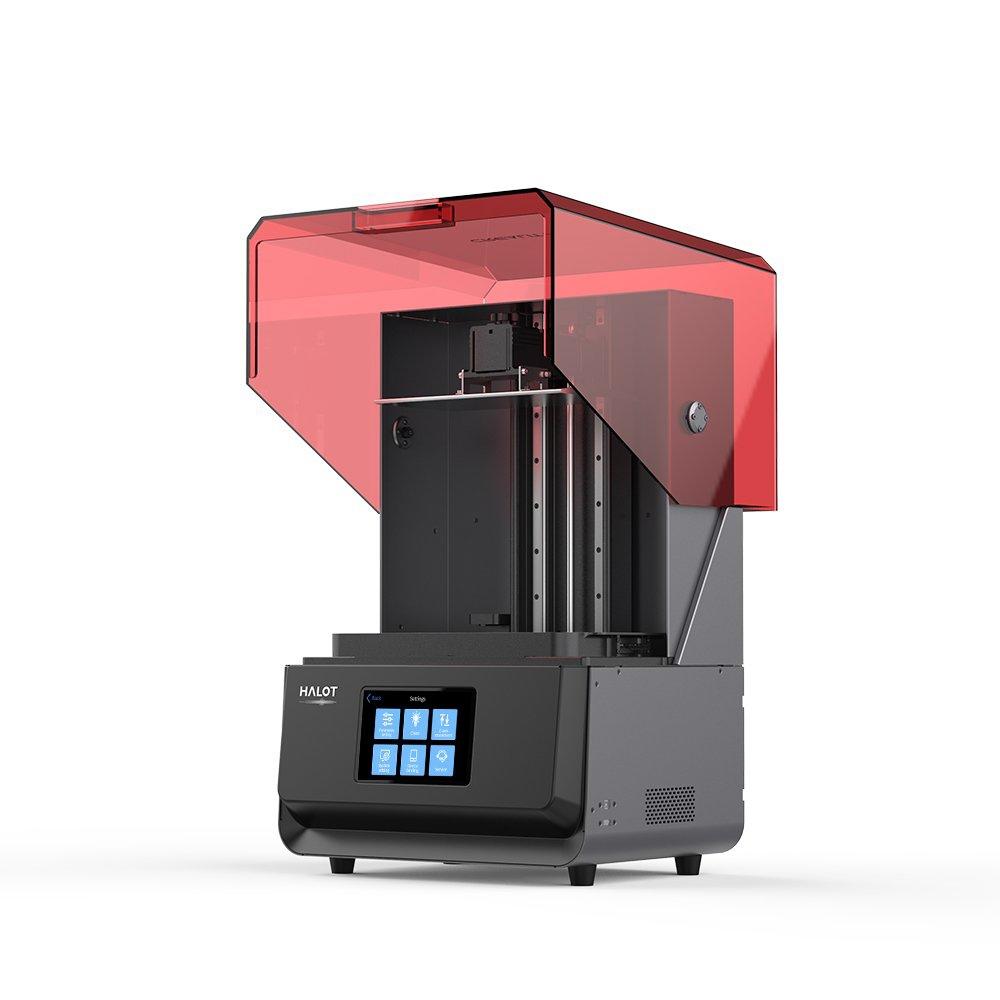Compare Ender 3 V3 Plus vs Halot Max
Comparison between the best 3D printers
Choose the best 3D printer at the best price. The cheapest 3D printers are here.
Buy a 3D printer here with 3D Fila.
 |
 |
|
| Model | Ender 3 V3 Plus |
Halot Max[BUY Halot Max] |
| Printing Material | Filament | Resin |
| Buy Filament for Creality Ender 3 V3 Plus | Buy Resin forCreality 3D Halot Max | |
| Estimated price | $479,00 | $3000,00 |
| Manufacturer | Creality | Creality 3D |
| Release Year | 2024 | 2021 |
| Print Volume [mm] | 300x300x330 | 293x165x300 |
| Printer Size [mm] | 410x445x577 | 480x387x770 |
| Weight [kg] | 11,5 | 32,5 |
| Power Loss Recovery | YES | NO |
| Maximum Resolution [mm] | 0,1 | 0,03 |
| Processor | ||
| Display | Touchscreen 4,3'' | Display touchscreen 5'' |
| Power Supply | 350 W | |
| Connectivity | Wifi, Bambu bus, Cartão SD | SD / USB / Wi-Fi |
| Operating systems | Windows, Linux, Macbook | Windows, Mac, Linux |
| Date of registration in the system | 2024-05-10 | 2022-11-04 |
| Release date | 2024 | 2021 |
| Extra features | The Ender 3 V3 Plus incorporates significant advancements in 3D printing, featuring a build volume of 300300330mm. It features a Creality operating system based on Klipper, which supports advanced functions such as linear advance and input shaping, and allows precise adjustments through root access or expert mode. The CoreXZ motion system allows a printing speed of up to 600mm/s, with an acceleration of up to 20000mm/s². Equipped with a flexible build plate and a quick-change nozzle with a hardened steel tip, the printer offers simplified maintenance and increased durability. Additionally, the high-speed direct drive technology of the extruder, together with an automatic leveling system and filament end sensors, raise the standard for reliability and efficiency. Compatible with a variety of filaments, including PLA and PETG, the Ender 3 V3 Plus is a robust choice for 3D printing enthusiasts and professionals. | The Halot Max printer stands out for its large print size (293 x 165 x 300 mm) and uses SLA technology. It has an integral light source for improved accuracy and a strong core with an advanced operating system. Its Z-axis module ensures high precision, supported by efficient slicing software. The machine offers online OTA updates and boasts an adjustable layer thickness between 10 and 200 microns. Its XY-axis resolution is 3840*2160, with 0.05 mm accuracy, and an integral 405nm light source. The printer includes a 5" touchscreen and multiple connectivity options, such as USB, Creality Cloud, and HALOT BOX WiFi. With cutting-edge technology, the Halot Max is ideal for printing small models with uniform precision, thanks to its self-developed lighting system and stable printing mechanism, which includes dual linear guides, ball screws, and an intelligent brake system. |
| Support for multiple colors and materials (AMS and CFS) | NO | NO |
Notes * |
||
| Cost-benefit | 7 / 10 | 5 / 10 |
| Hardware | 3.2 / 10 | 1 / 10 |
| Tela | . | . |
| Print volume | 4 / 10 | 3 / 10 |
| Performance | 5 / 10 | 9 / 10 |
| [BUY Halot Max] |
Conclusion |
| In comparing the Ender 3 V3 Plus and the Halot Max, several key differences emerge that cater to different user needs and preferences. The Ender 3 V3 Plus, priced more affordably, offers a generous print volume and impressive features such as a high-speed direct drive extruder and advanced operating system capabilities. Its compact size and lightweight design enhance its portability, making it an excellent choice for both hobbyists and professionals looking for reliable performance and versatility with various filament types. With its strong performance scores and cost-benefit ratio, it is particularly suited for users seeking a balance between quality and affordability. On the other hand, the Halot Max, while significantly more expensive, provides advanced SLA printing technology that excels in precision and detail for smaller models, highlighted by its high resolution and integral light source. This printer is ideal for users who prioritize ultra-fine detail and accuracy, such as in jewelry or miniatures, over size and speed of production. Additionally, its advanced features, although trade-offs in cost-effectiveness, suggest it is tailored for more specialized applications. Ultimately, the choice between these two printers depends on the user's specific requirements—whether it be for broader printing applications with high-speed performance or for niche tasks that demand exceptional detail and precision. |

